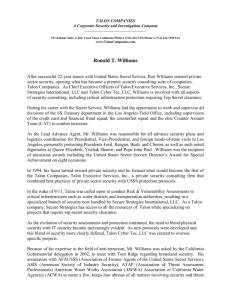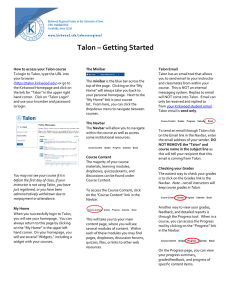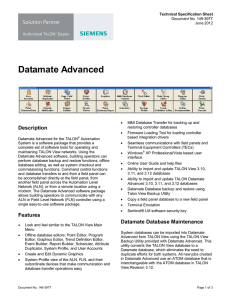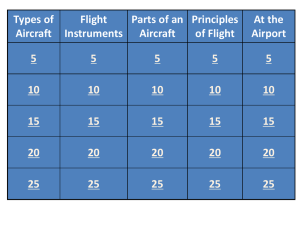NTAS 2010: Talon Systems
advertisement
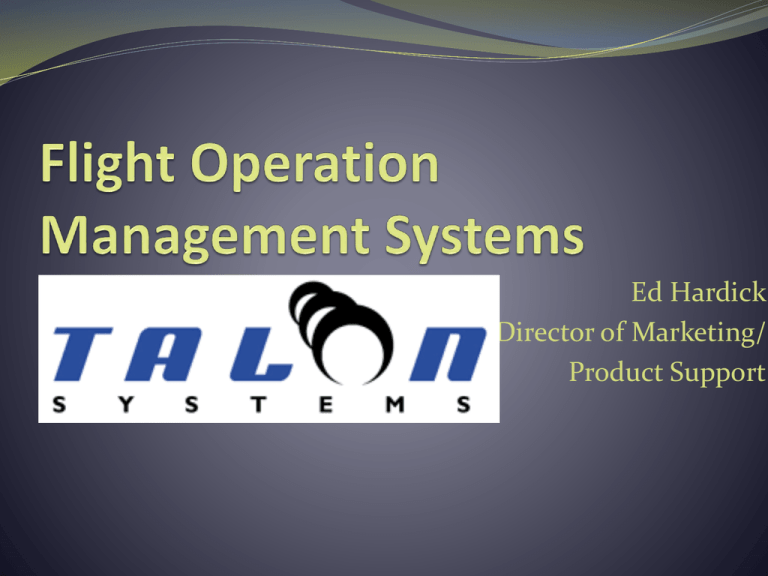
Ed Hardick Director of Marketing/ Product Support Overview Key Features of a Training Management System (TMS) - Talon’s “ETA” Key Features of a Resource Maintenance Management System (RMS) –Talon’s “RMS” Key Features of a Safety Reporting System – Talon’s “SMART” Increasing Importance of Management Systems Trends in Training Management System Requirements What is a TMS? Software application to manage all elements of a student’s training and training program requirements Curriculum is central part of the system Set rules for executing the training curriculum Resource requirements Instructor/Student Currencies/Qualifications Allowable repeats Grading Standards Scheduling versus training management Integrate all training program elements Importance of a TMS Paper-based training management Inefficient Error prone Record keeping is problematic and time consuming Minimal connection between scheduling and training Interaction with Electronic Management Systems better prepare graduates for the Airline Environment as similar tools will be used to manage daily operations. Curriculum Manager Personnel Manager Scheduling Operations/Dispatch Training Records Management Tools Financial Reporting Maintenance Manager What is a Resource Maintenance Management System? Software application to manage all elements of Aircraft Maintenance Requirements Scheduled maintenance events, work orders and inventory management and control are central parts of the system Must be integrated with the Dispatch function in the training management system Down aircraft not available for operations Prevent using aircraft that have maintenance events that are due Automatically update aircraft maintenance times in real-time Maintenance Events Discrepancies Resource Manager Work Orders Inventory Manager Management Tools Reporting Safety Manager Phase I of Talon’s “SMART” will begin beta-test by the end of March, 2010. Phase I consists of: Report data collection Safety surveys Basic investigation management General Concern Most data fields are user-defined including whether responses are required. Safety Survey Survey Questions are user defined, including answer types. Incident Reporting Data fields in red indicate that responses are required. Management Trends Airlines and other operations that hire our graduates are relying more on electronic management tools. Systems such as ETA, RMS and SMART prepare students for the electronic management culture. Increasing Flight School Competition Schools must become more efficient and student training more effective International Customers Want electronic record keeping and web access to monitor key aspects of the Operation. Regulatory Agencies Shifting to Electronic Summary Integrated Electronic Training and Maintenance Management Systems Offer Flight Training Operations Detailed oversight of student training Increased manager involvement Improved instructor performance Reduces risk of aircraft maintenance violations Reduces/eliminates paper in training and maintenance operations Provides tools to make operation more efficient which lowers costs Provides students with improved training management and more effective training which lowers costs to student



